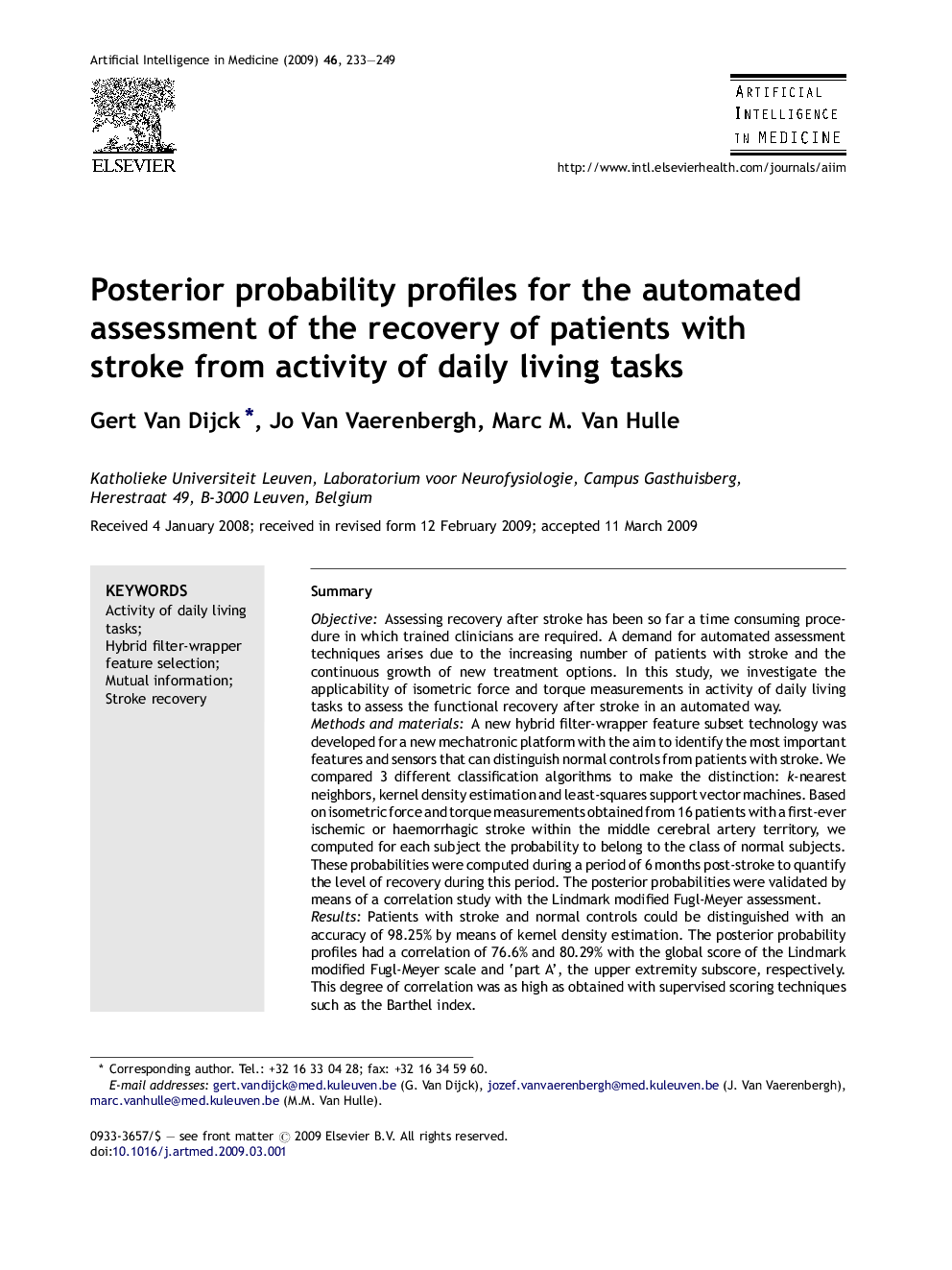| کد مقاله | کد نشریه | سال انتشار | مقاله انگلیسی | نسخه تمام متن |
|---|---|---|---|---|
| 377926 | 658852 | 2009 | 17 صفحه PDF | دانلود رایگان |

SummaryObjectiveAssessing recovery after stroke has been so far a time consuming procedure in which trained clinicians are required. A demand for automated assessment techniques arises due to the increasing number of patients with stroke and the continuous growth of new treatment options. In this study, we investigate the applicability of isometric force and torque measurements in activity of daily living tasks to assess the functional recovery after stroke in an automated way.Methods and materialsA new hybrid filter-wrapper feature subset technology was developed for a new mechatronic platform with the aim to identify the most important features and sensors that can distinguish normal controls from patients with stroke. We compared 3 different classification algorithms to make the distinction: k-nearest neighbors, kernel density estimation and least-squares support vector machines. Based on isometric force and torque measurements obtained from 16 patients with a first-ever ischemic or haemorrhagic stroke within the middle cerebral artery territory, we computed for each subject the probability to belong to the class of normal subjects. These probabilities were computed during a period of 6 months post-stroke to quantify the level of recovery during this period. The posterior probabilities were validated by means of a correlation study with the Lindmark modified Fugl-Meyer assessment.ResultsPatients with stroke and normal controls could be distinguished with an accuracy of 98.25% by means of kernel density estimation. The posterior probability profiles had a correlation of 76.6% and 80.29% with the global score of the Lindmark modified Fugl-Meyer scale and ‘part A’, the upper extremity subscore, respectively. This degree of correlation was as high as obtained with supervised scoring techniques such as the Barthel index.ConclusionThis study shows that the assessment of recovery after stroke can be automated by means of posterior probability profiles due to their high correlation with the Fugl-Meyer assessment. The posterior probability profiles confirm the importance of a recovery within the first weeks after stroke to obtain a higher recovery plateau compared to later changes in recovery.
Journal: Artificial Intelligence in Medicine - Volume 46, Issue 3, July 2009, Pages 233–249